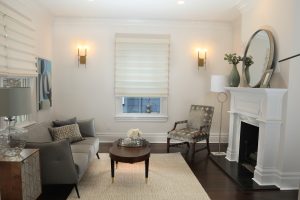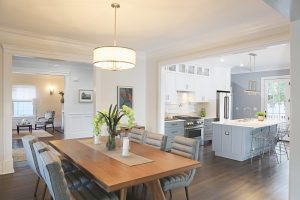How to choose color for the interior of your home

Have you decided to renew the look of an interior by changing the color (interior painting) of its surfaces? You would definitely notice that there is a wide range of interior paints on the market, not only in terms of shades, but also in quality and type of paint. This will make your final decision difficult if you do not know from the beginning the features that the product you are going to use should have.
Below we will see together not only how to choose the right shade to refresh your space, but also what kinds of colors are suitable for different parts of the house.
Color choice
And now the question that torments everyone who wants a color change in an area of their home.
How do I choose the right shades for my rooms?
Aside from your personal preference, you should consider two main factors. The size of the room and its brightness, as well as the style of decoration.
For painting small rooms, light, bright shades are recommended, which make the room appear larger than it actually is. The ideal colors in this case are definitely white, beige, as well as other soft shades such as pale yellow and siel. The latter also illuminate the room and are therefore ideal for rooms that do not have windows or rooms in which natural light does not enter to a large extent. On the contrary, all dark shades should be avoided or used only on one surface, as they “shrink” the space.
The second factor to consider is the decorating style. For example, a living room with a classic style should be painted in more refined shades such as white, beige, pale pink. Soft colors give the appropriate emphasis to the furniture in the room and do not distract the visitor’s eye from your decoration.
Conversely, a bedroom with a modern style will stand out using stronger colors, complementary to each other. The colored surfaces should not affect the aesthetics of the room and there should always be a color harmony.
Color selection
It is known that each color gives rise to different sensations. It is good to study the different shades available in order to create a space that will offer you harmony and elegance.
For bedrooms, the best colors are those that offer a feeling of relaxation. Some of them are light blue, siel, green as well as pastel, softer shades.
For the living room, you can also use more dynamic colors such as red and orange, colors that inspire people to socialize. Of course, you have to be careful not to overdo it, as you can achieve the opposite effect, namely overstimulating your nervous system. Try pairing a dynamic color like red with more neutral shades like white or black.
When it comes to the kitchen and bathroom, you are free to use any shades you prefer. More relaxing shades are usually recommended for the bathroom and more lively shades for the kitchen.
Color combinations
Color combinations are perhaps more important than the colors themselves, especially since houses are rarely painted in one color. Monochromes consist of a combination of different tones of the same color, proportional combinations are made with colors that are next to each other on the color wheel, while complementary combinations consist of those that are opposite the color wheel (eg purple-yellow).
Every color has shades and shadows. The hue of a color is essentially the result it will produce when you mix it with white and shade when you mix it with black. According to color theory, a color combination is harmonious when you have two complementary colors (opposite the circle) or three colors forming an equilateral triangle or four colors forming a square (two complementary color pairs).
It is worth noting that companies produce any shade but because the gloss is different, it affects the perception of the color, so you should first do the relevant tests before settling on a brand and color code.
What roller is needed for proper painting?
The quality of the wall also determines the type of roll. For example a smooth and well plastered wall or plasterboard needs a short-pile cut roller for an even result. On the contrary, a rough wall with several imperfections from plastering will need a thick roller to be able to penetrate the gaps and imperfections.
So we have seen that it is important to choose the right type-code color so that the color has the required shade, the right finish, ease of washing and resistance to the conditions. Remember that in this effort you should also do small tests because a color never looks the same in different conditions. From there, you will need to know the combinations based on the color wheel and apply the decorating advice and tips that you can find here in order to paint your space and make it pleasant and functional.







